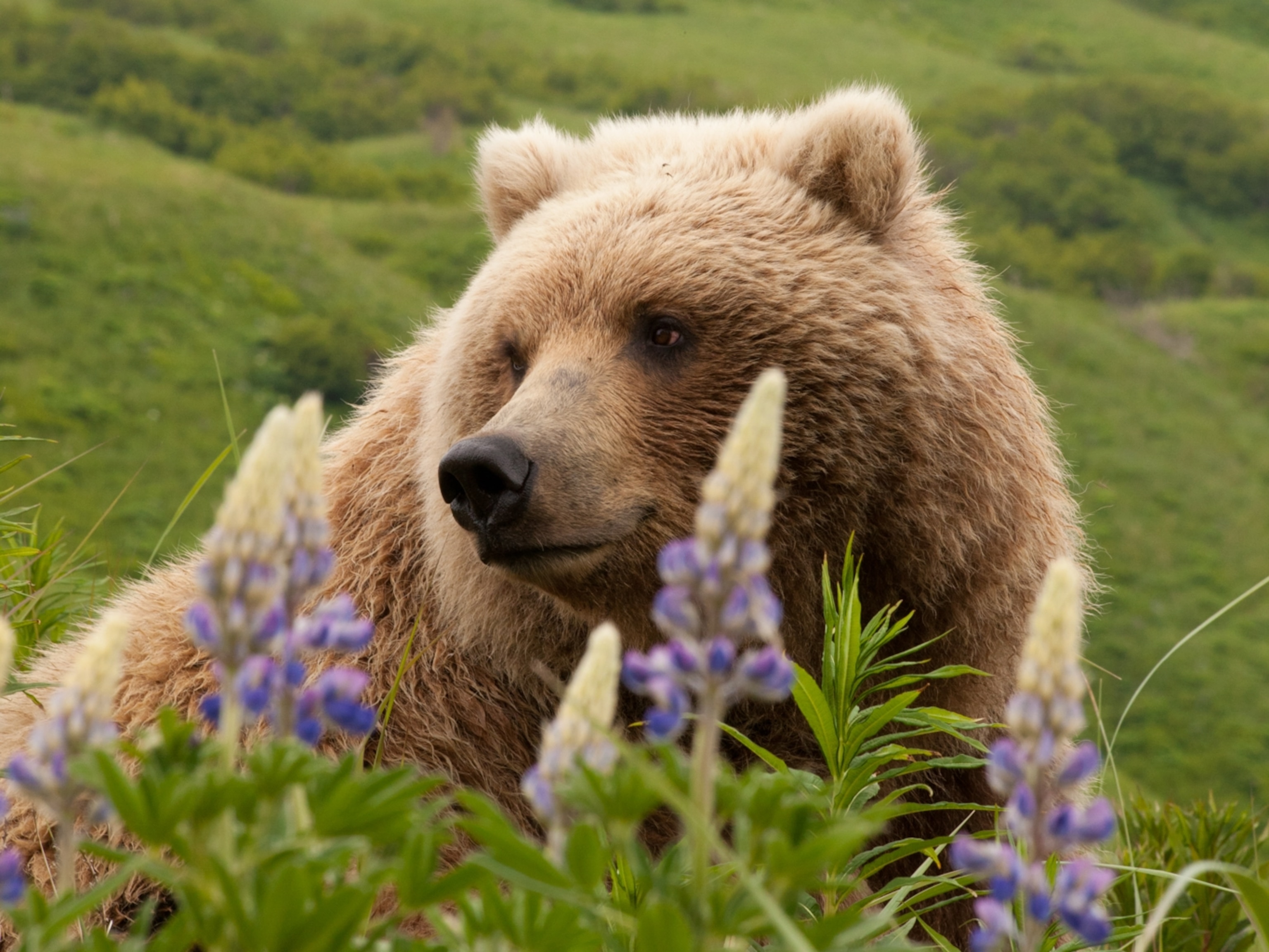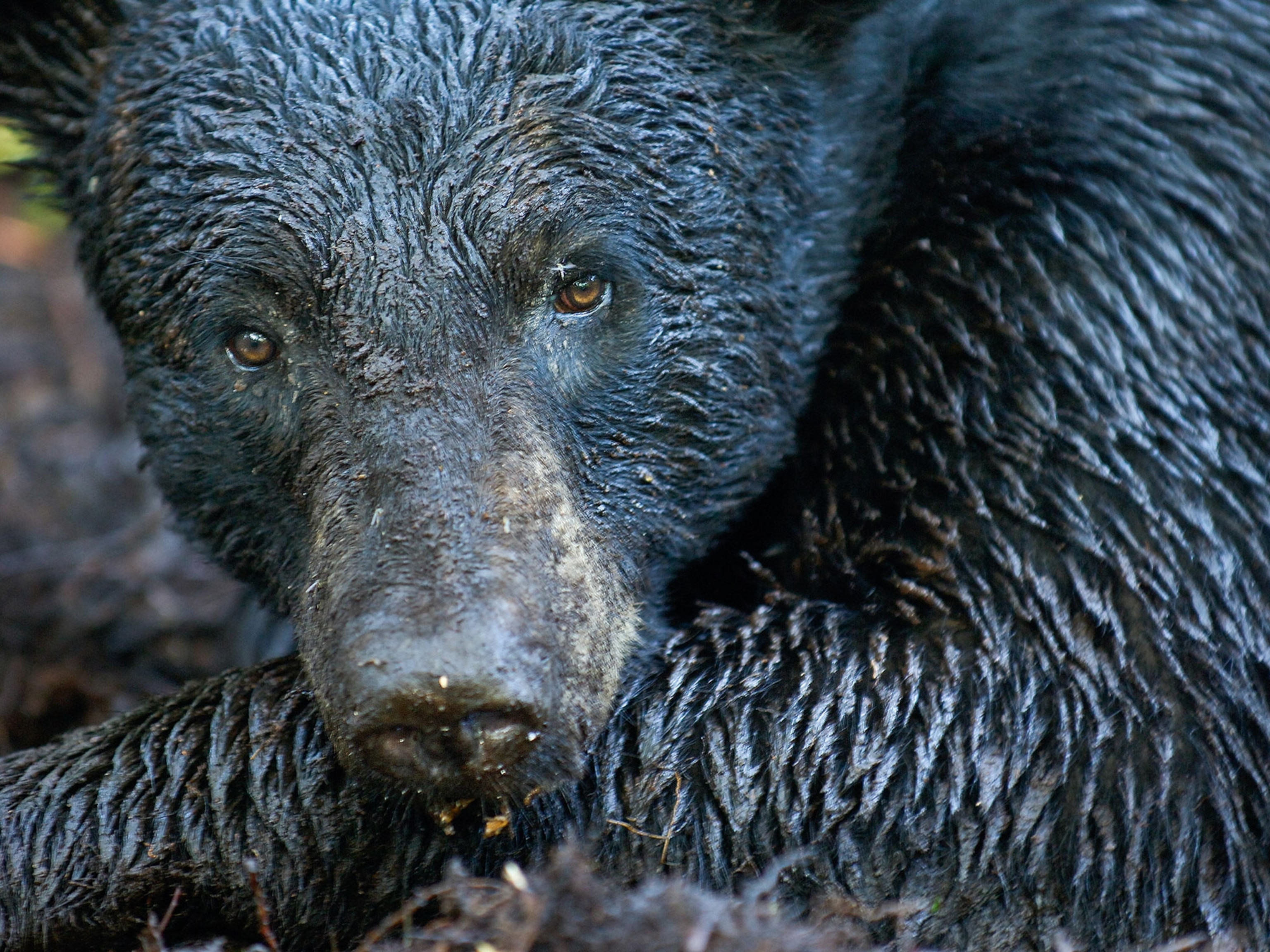
How a Runner Survived a Bear Attack During a Race
A marathoner encountered a bear and her cubs during a race in New Mexico. Find out how she survived the attack—and what to do if it happens to you.
Karen Williams had been running for just over six hours on Saturday, June 18, when she was attacked by a black bear in Valles Caldera National Preserve in northern New Mexico. The 53-year-old athlete, who has been competing in triathlons since 1984 and started running ultra-marathons when she turned 50, was competing in the annual Valles Caldera Marathon and was feeling good. “I’m slow and it was hot, but I thought, ‘I got this, I’m finishing this one,’ ” Williams recalls from her home in Los Alamos, New Mexico.
When she crested a hill 23.4 miles into the trail race where she was currently in 30th place out of 50 participants, she heard a noise, but it was too late.
“I’ve got lousy hearing, so by the time I saw her, she was already barreling up from the marshy area straight at me,” Williams says.
She noticed a bear cub just as she braced for impact. The bear knocked her down and began raking and biting her.
“I raised my arms and screamed ’cause it hurt like hell, but I could sense the scream made her more angry.”
The bear’s next swipe felt, to Williams, like it took her right eye out. Covering it with her hand she rolled over onto her right side and the bear began biting the left side of her neck. Williams curled into a ball, leaving her CamelBak backpack as her only protection.
She then played dead.
“I knew she didn’t like me screaming, so I stopped making noise, and I stopped moving.”
It worked.
The bear left to gather its cubs and eventually went on its way, looking back periodically.
Williams, who served in the U.S. military and is now a critical care/emergency room nurse, said, “I can keep a level head, so mostly I was thinking through the entire attack.”
Remembering lessons she’d read in an article about a bear attack the previous year, she laid still a full 10 minutes after she could no longer hear the bear. Unable to walk or open her eyes fully, she crawled 10 feet into the shade and waited.
The next voice she heard came about 33 minutes later, and it was a familiar one.
“It was Ken O’Connor, a retired, 79-year-old ultra-marathoner from Grant,” Williams says. O’Connor initiated her evacuation, and airlifted to the University of New Mexico Hospital in Albuquerque, where she was treated for non-life threatening injuries.
“We had 150 people cross that point in the preceding hours. Bears will usually stay away from a place with that much traffic,” says Valles Caldera Marathon race director Kris Kern. “This is the tenth year of the race, and I’ve been running here for 20 years. I’ve only seen two bears in that time.”
New Mexico state law mandates that a bear that attacks a human must be euthanized. The New Mexico Department of Game and Fish (NMDGF) tracked the bear using a location collar, and killed it that night. Parts of its brain are now being tested for rabies.
“Nobody likes to put an animal down, especially us; our job is to look after the wildlife,” says NMDGF spokesman Dan Williams.
“The Game and Fish guys did what they had to do,” Karen Williams says. She believes that the law is in place as an easier alternative to forcing people to pay upwards of $1,000 for the rabies shots, which, she says, most New Mexico residents can’t afford, and insurance won’t cover. The search is now under way for the bear's cubs, which will be taken to a wildlife center if they are found.
- National Geographic Expeditions
With the growth in human population comes an almost linear increase in bear attacks.
“Bears are superemotional and superintelligent. More often than not the bear will run away from you,” says American wildlife naturalist Casey Anderson, author of The Story of Brutus: My Life With Brutus the Bear and the Grizzlies of North America. “If a black bear actually attacks, it’s for one of two reasons: They think you are a threat or a food source. Ninety-nine percent of the time the bear is looking at you as a threat, so fighting back will create more of a problem.”
If you do startle a bear, Anderson suggests stopping forward movement, avoiding eye contact, and backing away slowly. If the bear charges in an attempt to eliminate you as a threat, Anderson says, hold your posture in a nondefensive way and stay calm. “Screaming is one of the main reasons people get facial and neck wounds, because the bear wants you to stop and be quiet,” Anderson says.
A starving or sick black bear might attack a human out of desperation. In this rare case, it’s time to fight. “Go for the sensitive areas on the bear like the eyes and nose,” Anderson says. “Regardless of the bear’s intentions, bear spray is the best way to fight back. It teaches the bear a lesson, much like we might learn with a skunk when something really nasty comes out of that animal.
“This is a win-win—we live and the bear lives.”







